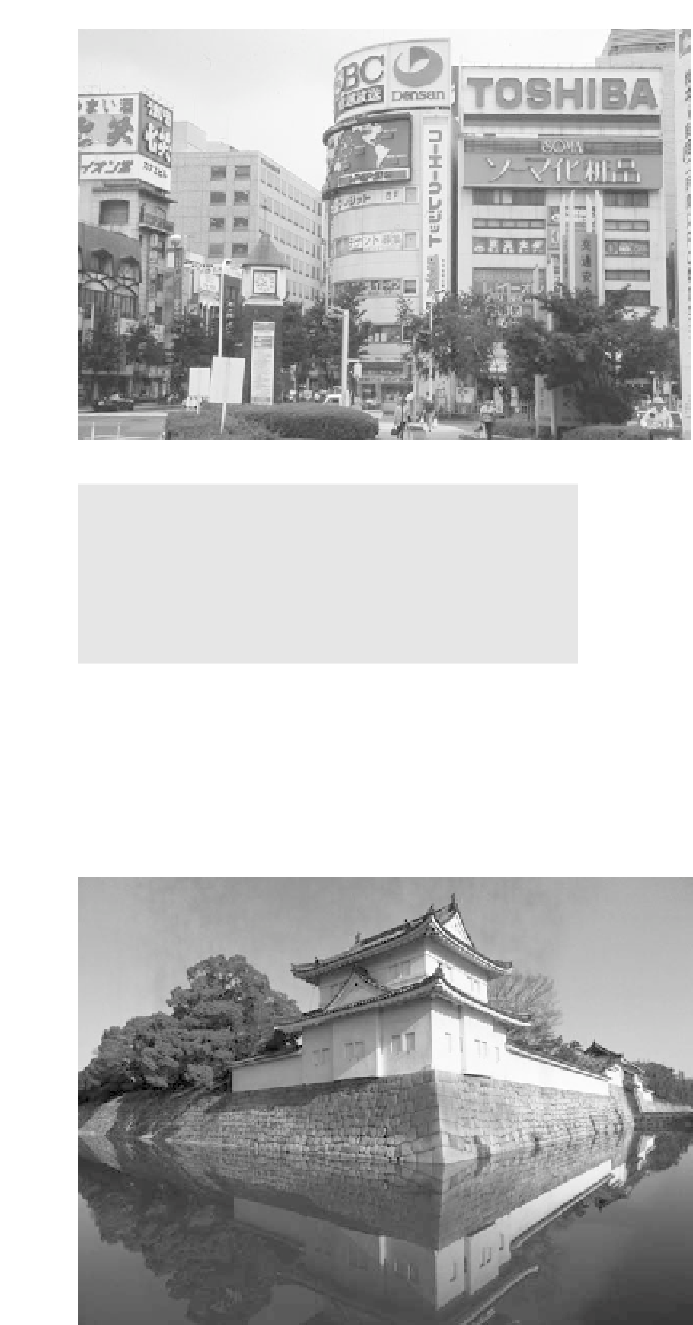Geography Reference
In-Depth Information
Figure 12-5
Signage in Japan reveals the country' s numerous
writing systems.
Photo courtesy of B. A. Weightman.
guage and many customs, art forms, and other traditions.
Japanese people are justifiably proud of their distinctive
culture, and continue to enjoy traditional foods, festivals,
theater, music, and other activities, even as they lead
modern lifestyles and follow fashions and current trends
from countries around the world.
For much of Japanese history , the capital was Kyoto,
the seat of imperial rule and repository for many aspects of
traditional Japanese culture. It is a beautiful city with spec-
tacular temples and gardens, as well as Nijo Castle and the
historic Imperial Palace, all outstanding examples of tradi-
tional Japanese architecture and landscaping (Figure 12-6).
After a time, the emperor lost power to Y oritomo, the
leader of one of Japan' s many clans. Y oritomo was the
Unlike Chinese, Japanese is easily written in
the Roman alphabet. The resultant
romanji
style of
writing is very important in advertising and com-
puter use. T oday' s technology allows the translation
of
romanji
into the traditional Japanese meld of
kanji, hiragama,
and
katakama
(Figure 12-5).
OPENING CLOSED DOORS
Japan continued to be influenced by its Asian neighbors
for centuries to come. However, as an island-nation it
was isolated enough to also develop its own distinctive
cultural patterns, including the unique Japanese lan-
Figure 12-6
This is the Nijo castle in Kyoto. It is a landscape
symbol of Kyoto' s role as a castle town.
Photo
courtesy of B. A. Weightman.©Werner Forman/
Corbis.


















Search WWH ::

Custom Search